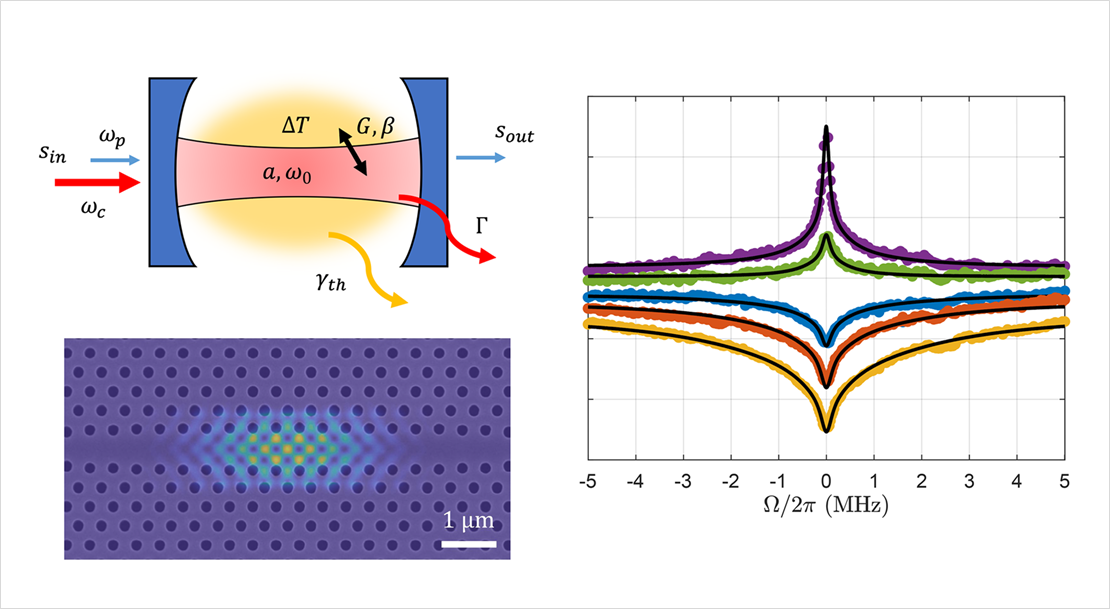Thermo-optically induced transparency on a photonic chip
Electromagnetically induced transparency (EIT) uses an optical control beam to induce a narrow transparency window in a normally opaque medium. This narrow transparency window is associated with a strong slow light effect and large group delays. However, the need for atomic resonance limits the operating conditions, with many EIT realizations requiring cryogenic temperatures or vacuum chambers, as well as tying the operating wavelengths to the resonances of the chosen material.
Therefore EIT analogue effects, where a similar effect is realized through optical control of two or more resonances have gathered a lot of interest. E.g. in Optomechanically induced transparency resonators with both a mechanical and optical resonance can achieve a similar effect, while in Brillouin scattering induced transparency a travelling phonon wave takes the role of one of the resonances.
Here we now realize a particularly compact and straightforward implementation of EIT analogue effects, through the use of the thermo-optic effect in a silicon photonic crystal cavity. The cavity resonance acts as the opaque medium, and the thermo-optic effect, i.e. a shift of the cavity resonance due to optically induced heating of the sample, acts as the control mechanism that induces the narrow transparency window. We control the window through the beating of a pump and probe beam, allowing us to tune the achievable group delay.
We realize micro-second delay associated with amplification instead of the large loss that optical delay normally entails in integrated photonic devices.
Our system can in principle be realized in any nanophotonic resonator and material with a strong thermo-optic coefficient, creating a new platform for the realization of slow light and EIT analoge phenomena.
This work is now published in Light:Science and Application and is available openly